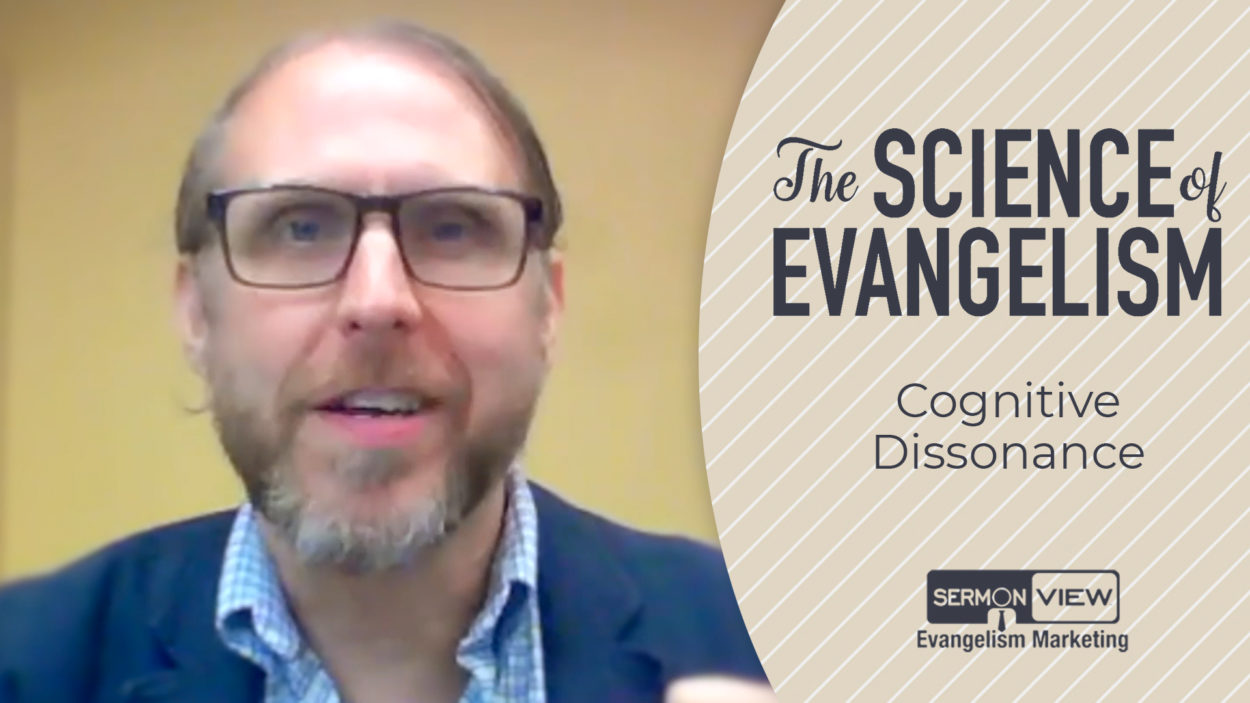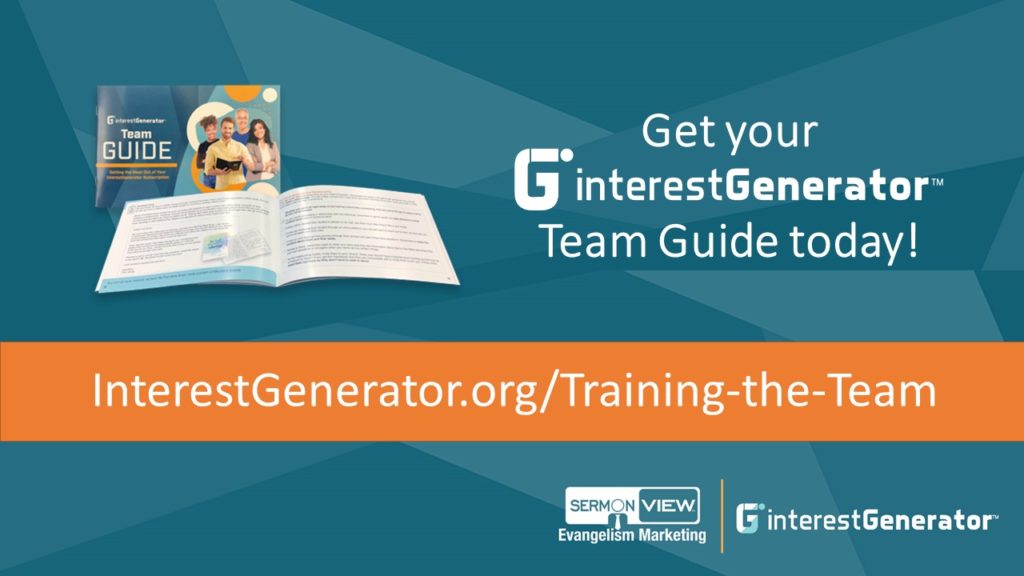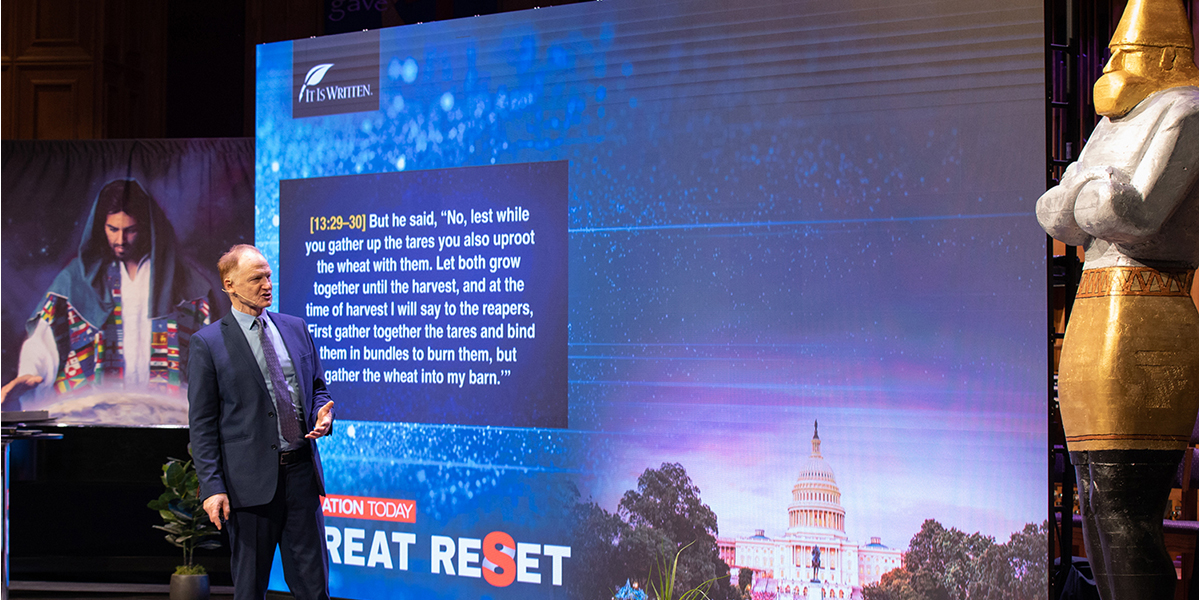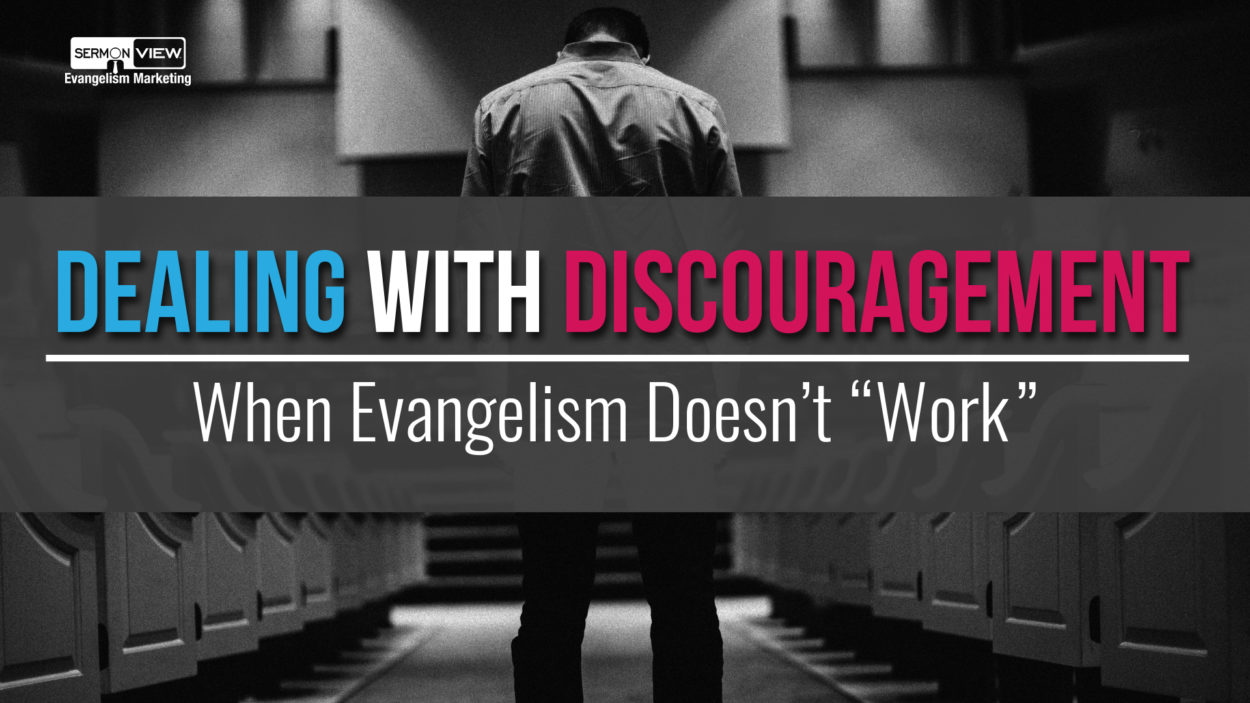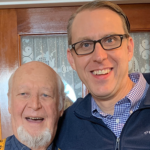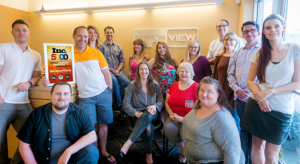I grew up in a home where we were aware of the speed limit, and ignored it entirely. I don’t know if it’s a genetic defect in my family, or the socialization growing up, but my parents do not drive the speed limit. I was born with a lead foot. And it’s been a problem for me most of my life.
I used to live in Seattle, and when I was a young adult I played in the worship band for the Oregon Conference down in Gladstone, OR. The drive from North Seattle to Gladstone should take about 3-1/2 hours, with no traffic. But the wheels on my car were not balanced, and my car would vibrate once I got up to 70 mph or so. If I kept accelerating, though, once I got up to about 95 mph the vibration would stop, so that was my minimum for the trip. One time I made the trip in just a touch over two hours. So yeah, I have a lead foot.
A few years ago I went to a retreat center in the Oregon woods. I spent three days just reflecting, journaling, praying, spending time with God out in nature. As I was driving home, feeling a spiritual high, I got this overwhelming sense of God telling me, I need you to drive the speed limit.
No way, I told Him.
But over the next several days a tension built in my soul. I remembered that Jesus obeyed the laws of the land, telling us to “give to Caesar what belongs to Caesar, and give to God what belongs to God” (Mat. 22:21 NLT). I knew the Apostle Paul wrote in Romans 13, “Those who refuse to obey the laws of the land are refusing to obey God” (verse 2 NLT). I couldn’t reconcile disobedience of traffic laws with obedience to Christ. And I finally reached a point where I realized that for me to remain a faithful disciple of Jesus, I needed to obey the speed limit.
So I slowed down. Oh, how painful it was, at least at first. But the pain of that cognitive dissonance motivated me to change my behavior. It was less painful for me to slow down on the road than to continue feeling that dissonance discomfort.
That’s the power of cognitive dissonance.
Today, I’m going to dive into the psychology of Adventist evangelism. Specifically, I’m going to share some of the research about cognitive dissonance that I’ve uncovered in my PhD studies, and I’ll look at how we can use this in our evangelistic practices.
For several years now I’ve wanted to develop a framework for innovation in Adventist evangelism. I want to find a way to take all the incredible creativity and passion found in churches across the NAD and harness that in a way that actually propels effective evangelism forward for all of us. As I’ve worked on this, I came to realize that I need the academic rigor of a doctoral program to actually develop this. So last year I started working on a PhD in strategic media at Liberty University. As I’ve looked at the range of communication theories, I’m beginning to see how many of them apply specifically to our evangelistic practices in the Seventh-day Adventist Church.
Adventist Evangelism
So let’s start by looking at the purpose of Adventist evangelism. Membership is really important to Seventh-day Adventists, and it has a very specific definition and process. It requires extensive Bible study leading to an understanding of, and agreement with, 28 fundamental beliefs. Traditionally, specific behavioral changes were also required prior to official membership, such as abstaining from tobacco and alcohol use. Once these prerequisites are met, an individual becomes a member when they are baptized or, if the individual was previously baptized by immersion, a public profession of faith (General Conference, 2016, p. 44-51).
Several of these fundamental beliefs require a significant shift in belief. You can’t just walk up to someone on the street and say, hey, I’d like you to join my church. You just need to change the day you worship on, give 10% of your money to the church, and give up meat for textured vegetable protein. And by the way, your grandma is not actually in heaven. Right? It takes time to help someone work through these shifts in thinking.
I’m not going to argue whether we should be making members as part of the discipleship process. I’m taking that as a given. Adventists believe that as someone grows closer to Jesus, and better understands what He Himself taught about Scripture, that person will want to identify with this Remnant Church. In our denomination, then, at a practical level, active membership is our goal for evangelism.
Now, historically public evangelistic meetings have been the primary means of recruiting members. Our denomination has used this method for over 150 years, which begs the question: why are we still using this method? And cognitive dissonance theory actually gives us an answer: because public evangelistic meetings are the most effective way of helping a group of people adopt a new identity as Seventh-day Adventists.
Cognitive Dissonance Theory
Cognitive dissonance theory was first proposed over 65 years ago by Leon Festinger (1957), and since then it has received widespread attention and mountains of research. Here’s the theory in a nutshell:
You have in your mind a bunch of attitudes, perceptions, knowledge, and beliefs. The theory calls these thoughts “cognitions.” When cognitions are related to each other, they can be either consistent or discrepant. Two cognitions are consistent if one leads to the other, and they are discrepant if they are inconsistent with each other.
Cognitive discrepancy leads to psychological discomfort, or dissonance. It’s uncomfortable. “The magnitude of dissonance between one cognitive element and the remainder of the person’s cognitions depends on the number and importance of cognitions that are consonant and dissonant with the one in question” (Harmon-Jones & Mills, 2019, p. 4).
Using myself as an example, I have a belief that I am a law-abiding citizen. But when I drive over the speed limit, that can lead to cognitive dissonance. That act itself is discrepant with my belief that I’m a law-abiding citizen. When I get in the habit of constantly looking for police, this habit is discrepant with my belief that I’m a law-abiding citizen. And when I realize that I’ve gotten a reputation among my friends for having a lead foot, that reputation is inconsistent with my belief that I’m a law-abiding citizen.
So humans use several strategies for reducing dissonance (McGrath, 2017). First, they can remove discrepant cognitions. They can choose not to retain the thought that leads to the dissonance. So for example, I could decide to completely ignore speed limits, or decide that speeding is not really breaking the law. That eliminates this discrepant cognition.
Second, they can add new consonant cognitions. For example, I could focus on my time usage, where speeding is consistent with my belief that using my time as efficiently as I can. Or at lower speeds I could focus on how speeding to get into 5th gear is more energy-efficient, saving me money on gas, thus my speeding shows good stewardship of the financial resources God has given.
Third, they can reduce the importance of dissonant beliefs. Speeding is not as big a deal as stealing or murder.
And fourth, they can increase the importance of consonant cognitions. For example, troopers in my state are required to issue a ticket when someone is caught going more than 10 miles per hour over the speed limit. When I’m only going 5 miles over the limit, I can focus on that to lower my dissonance discomfort.
In addition, resistance to changing a particular behavioral cognitive element depends on how much pain or loss the change requires, as well as the pleasure, or reduction in pain, that would come from the changed behavior (Harmon-Jones & Mills, 2019, p. 4). So slowing down increases the pain of driving, as I spend more time in the car commuting. On the other hand, paying a traffic fine is also painful, which is why people often drive more slowly for a while after getting a ticket.
So why is cognitive dissonance so powerful?
One researcher suggests the reason dissonance pain that comes from cognitive incongruency is so uncomfortable is that it implies mistakes in the individual’s belief system (Gawronski, 2012). This inconsistency serves as an unambiguous indication that one’s beliefs must be updated to fix this error.
Because it’s about beliefs, cognitive dissonance theory is a great framework to use in Adventist evangelism.
Using Cognitive Dissonance in Persuasion
So let’s talk about that. How can we use cognitive dissonance in evangelism?
Researchers have looked at several tactics that can be applied in persuasion environments to leverage cognitive dissonance to change a belief (Carpenter, 2019). Let’s go through some of these and look at how they can be applied in the context of public evangelistic meetings.
Repetition
Repetition can lead individuals to change belief. One early study found that repeated exposure to incongruent information can increase cognitive dissonance, leading directly to belief change (Anderson, 1971). Another study found that people average various pieces of information (Anderson & Farkas, 1973). As inconsistent cognitions are introduced, cognitive dissonance grows, until a tipping point is reached. The new cognitions overwhelm the previous ones, resulting in a reduction of cognitive dissonance as a new belief is accepted due to the repeated exposure to this new information. Because of this, beliefs typically move in the direction of the new information being assimilated. As more information is processed, the weight of the belief is increased, making it harder to change in the future (Phillips, 2021).
Let me give an example from my experience. Back when I was in my 20s, I found myself listening to Rush Limbaugh every day. It didn’t take long before my political views move sharply conservative. Then I moved, and started listening to NPR every day on my commute. Guess what? After a few months I found my political views had become quite liberal. In both cases, as I was exposed repeatedly to a particular viewpoint, my beliefs shifted in the direction of the new information being assimilated.
Public evangelistic meetings are highly repetitive, with various cognitions building on previous ones. The series typically starts with an emphasis on the authority of Scripture, which is then repeated in every meeting. There is also repeated appeal in most meetings to the Lordship of Jesus, as revealed in Scripture, and participants are invited to step forward in obedience to Jesus repeatedly.
The difficult topics that present the most cognitive dissonance are presented later, after a lot of repetition of other consistent cognitions.
Valence
A cognition with a higher valence, or value, to a subject has more impact on increasing or decreasing the dissonance resulting from an inconsistent cognition (Chung & Fink, 2008). Several aspects of both the series environment and the presentation work to increase the valence of cognitions consistent with new beliefs introduced by the speaker.
First, the series topic itself offered value to participants. Bible prophecy is a complex topic requiring guidance from an expert, and there’s a lot of interest in it. Using Bible prophecy as the framework for teaching Bible doctrine increases the value of the resulting information presented.
Weight
The weight of each consistent cognition adds to the overall weight, leading to adoption of the new belief (Chung & Fink, 2008). So you can increase the weight of consonant cognitions to help someone adopt a new belief. For example, public evangelistic meetings focus on increasing the weight of scriptural authority. Because all these beliefs are based on the Bible, scriptural authority is the one cognition consistent with every new belief as it is introduced. Throughout the series, the Bible is put forth as the authoritative source of truth and therefore given tremendous weight.
Once a guest accepts this belief in the Bible, it becomes a cognition consistent with each new belief as it is introduced. Giving the Bible weight as a consistent cognition helps drive guests toward the adoption of each new belief.
Credibility
Early on, researchers looked at the role credibility played in cognitive dissonance. One study found that getting a discrepant message from a highly credible source produced higher dissonance discomfort than a similar message from a less credible source (Aronson et al., 1963). For example, if your doctor says you have high blood pressure and should cut down your sodium intake, this will create more cognitive dissonance than if your spouse says it. Essentially, the credibility of the source adds weight to the cognition delivered by that source, encouraging belief change (Phillips, 2021).
Several characteristics of evangelistic meetings work to raise the credibility of the speaker, thereby increasing the weight of new beliefs as they are introduced. Wearing a suit culturally indicates professionalism and authority. The speaker bio in marketing materials can raise credibility.
The environment itself can raise the credibility of the event in several ways. Consistent, high-quality graphic design in marketing pieces, the banner outside the church, and the large backdrop on stage raise credibility. A large mail piece printed in color on glossy paper implies a high-value event. Requesting that guests pre-register will make the event appear to have limited supply, raising its value (Lynn, 1991), and the registration table itself in the lobby can also raise the perceived value of the event. All these characteristics increase the credibility of the speaker and the event itself, thereby increasing the valence of each new belief that is presented.
Social Support
Studies have shown that social support for an inconsistent cognition increases dissonance, leading to an attitudinal change to reduce this discomfort (Lepper et al., 1970; Strobe & Diehl, 1981). In other words, social judgment increases the weight of the inconsistent cognition, driving toward a change in belief (McKimmie et al., 2003).
It appears that part of the power of public evangelistic meetings is the social support provided in this environment. Guests interact with several church members prior to even sitting down at the first meeting. There will often be “row hosts” assigned to various sections of the seating area whose task is to engage guests in conversation before and after each meeting, building a relationship. Repeated exposure to the same individuals leads to relational bonding (Littlejohn et al., 2021, p. 227), which in turn provides social support for belief change (McKimmie et al., 2003). Having both members and guests wear name badges will aid in this social bonding.
There is also a social aspect to the presentation itself. The speaker can ask a question of the audience, anticipating agreement. For example, you could ask, “How many of you think that we’d be better off if we believe the Bible?” and raise your hand as an example. When people in the audience raise their hands, too, it demonstrates widespread social support for the statement, which adds weight to that cognition.
Task Difficulty
Here’s one that is completely counterintuitive. The more effort someone puts into a task, the more valuable the resulting reward is perceived to be. In cognitive dissonance theory this is known as the effort-justification paradigm (Harmon-Jones & Mills, 2019, p. 7), and has been confirmed in numerous studies over the years. Requiring more effort to gain the benefit of a specific change in belief increases the value of that belief, and leads to a longer-lasting change.
One of the criticisms of public evangelism among Seventh-day Adventist members is the substantial time commitment required to participate. Yet for those who do participate, this very commitment raises the difficulty level of the task, which is found to decrease dissonance for cognitions related to that task. In addition, the Bible study guide provided to each guest at the conclusion of each meeting is homework that requires additional effort. The effort-justification paradigm suggests that participants who put more effort into the event will find more value in the resulting beliefs.
The long-term effect of this effort is a reduction in post-decisional dissonance, which will lead to higher retention of these new members in the church. In other words, if we want people to stay members after they join, we should be making things harder for them, not easier.
Freedom of Choice
Scholars have looked at the impact of “forced compliance” on cognitive dissonance (Joule & Azdia, 2003). When someone is forced to comply with a rule that is inconsistent with other cognitions, they have less dissonance about that behavior than if they freely chose to follow that rule. As a result, belief is more likely to change when there is freedom to choose that belief, rather than being forced by circumstances or authority.
This is an explanation for what happened in Nazi Germany, when people did things that were incongruent with their core beliefs. Because they felt forced to do these things, they had lower cognitive dissonance, which allowed them to move forward with these behaviors.
Throughout a public evangelistic series, freedom should be granted to each guest to make decisions on their own. While an environment is created conducive to acceptance of each belief that was introduced, compliance is not forced. This increases the dissonance discomfort of new beliefs, which will lead to the adoption of that new belief to reduce dissonance discomfort.
Reduced Media Exposure
I want to cycle back to the weight given to cognitions, and point out something else. Beliefs tend to move toward the new cognitions being integrated, and information integration shapes belief through the averaging of various pieces of information. Because of this, it is important to minimize exposure to cognitions that are inconsistent with each new belief being introduced.
Most television programs propagate a belief system inconsistent with our biblical perspective (Kidder & Penno, 2016). Because of this, minimizing exposure to such television programming will help reduce the weight of cognitions inconsistent with the new beliefs. Public evangelistic meetings occur multiple nights per week for several weeks. So one side effect of this structure is that media consumption is reduced. Participating in the meetings necessarily means guests are not watching television during that time. This reduces the weight of cognitions promoted by this TV programming, and allows the average of information being integrated to be weighted toward biblical belief.
Furthermore, the study guides and books offered at the end of each meeting reduces media exposure as well, because time spent studying and reading this material means less time for consuming other media.
Are you understanding what I’m saying? Public evangelistic meetings essentially require a media fast for several weeks, which has all kinds of benefits. For us, it means incongruent beliefs from television programs are not reinforced during this time period, and that leads toward belief change.
Summary
So these are the different ways specific tactics influence cognitive dissonance:
- Repetition
- Valence, or value
- The weight of cognitions
- Credibility
- Social support
- Task difficulty
- Freedom of choice versus forced compliance
- Reduced media exposure
Cognitive dissonance among participants in public evangelistic meetings appears to be tactically managed through many characteristics of these meetings. Researchers point out that as new information is integrated, it shapes belief through the averaging of various pieces of information (Anderson & Farkas, 1973). As inconsistent cognitions are introduced, cognitive dissonance grows, until a tipping point is reached. The new cognitions overwhelm the previous discrepant ones, resulting in a reduction of dissonance discomfort as a new belief is accepted due to the repeated exposure to this new information.
So the key here is not that you want to minimize cognitive dissonance in evangelism. That dissonance discomfort is the very thing motivating people to change their beliefs. Remember, the reason humans find cognitive dissonance to be so uncomfortable is that it implies mistakes in the individual’s belief system. Inconsistency serves as an unambiguous indication that one’s beliefs must be updated to fix this error. Dissonance discomfort is a powerful motivator for changing belief.
So it’s not that you want to minimize cognitive dissonance. What you want to minimize are cognitions that are incongruent with the new belief you’re introducing, and the way to do that is to emphasize cognitions that are consistent with that new belief. This is why emphasizing scriptural authority is so important in Adventist evangelism.
Innovation
Let’s end by talking about evangelistic innovation. Many of the characteristics of public evangelistic meetings would result in decreased effectiveness if removed from the method’s structure. For example, reducing the number of meetings lowers the information repetition and reduces the task difficulty, which would work against belief adoption. In addition, a shorter series would not reduce media exposure by the same amount, resulting in more weight given to cognitions inconsistent with Scripture. Through the Covid-19 shutdowns over the last two years, many churches attempted to hold public evangelistic meetings online, but found the effectiveness was reduced. Cognitive dissonance theory would predict this, due to the reduced social support participants receive in an online environment.
On the other hand, there are tweaks to public evangelistic methods which may increase effectiveness. For example, Steve Vail is the evangelist in the Carolina Conference. He has tested a seating arrangement with participants in table groups. Initial results have been promising, suggesting this has the potential to improve effectiveness by increasing social bonding between members and guests, resulting in higher social support for the new beliefs.
The belief framework of Seventh-day Adventist doctrines can lead to significant cognitive dissonance among people newly exposed to these beliefs. As we innovate evangelistic methods, it is important to ensure that cognitive dissonance is effectively managed throughout the process to drive toward belief change. Whether the innovation is evolutionary, with small tweaks to the method, or revolutionary, attempting wholly new approaches, we have to think about cognitive dissonance as we make these changes. The strategies for managing inconsistent cognitions and the resulting dissonance discomfort must be considered for the innovation to be effective.
Let’s go back to the original question. Why are we still doing public evangelistic meetings? Our denomination has used this evangelistic method for over 150 years. So why do we still use this method? I think by now the answer should be obvious. Cognitive dissonance theory shows that public evangelistic meetings are incredibly effective at helping a group of people adopt their new identity as Seventh-day Adventists.
Conclusion
As I’ve worked on this research and put this presentation together, I’ve realized how complicated this stuff is. So let me try to simplify it as I end.
You have to consider cognitive dissonance when you’re doing evangelism. If you pile on too much information that is incongruent with someone’s current belief structure, they’re going to just throw it all away. That’s the easiest way to deal with dissonance discomfort. But when you have an ongoing relationship with someone, it’s harder for them to just throw it away. And when you gently build that information, it gives the best chance for reaching that tipping point, where someone will change their belief because it’s the easiest path to reduce the dissonance discomfort.
Public evangelistic meetings are really effective at doing this, which is why the fastest growing Adventist churches in the NAD still include this as part of the evangelism cycle. The evangelism pyramid tells us that when built on the foundation of friendship, kindness and compassion projects, seed-sowing activities, and bridge events, a reaping series can be incredibly effective at introducing Bible Truth in a way that leads to lasting change in belief.
At SermonView, we have a passion for ministry, and we’re nerds for marketing. We believe that church exists for those who are not yet part of it, so our passion is helping churches like yours reach people in your community who are ready to connect with you. We do that by helping you market your evangelistic events, and by finding people in your community ready to study the Bible with you. And we can also help you turn your church website into an evangelism engine.
The SermonView crew would love to help you market your next evangelistic event. Let us know if you’re planning a bridge event or reaping series and we’ll get you a quote for evangelism marketing.
References
Anderson, N. H. (1971). Integration theory and attitude change. Psychological Review, 78(3), 171–206. https://doi.org/10.1037/h0030834
Anderson, N. H., & Farkas, A. J. (1973). New light on order effects in attitude change. Journal of Personality and Social Psychology, 28(1), 88–93. https://doi.org/10.1037/h0035578
Aronson, E., Turner, J. A., & Carlsmith, J. M. (1963). Communicator credibility and communication discrepancy as determinants of opinion change. The Journal of Abnormal and Social Psychology, 67, 31–36. https://doi.org/10.1037/h0045513
Carpenter, C. J. (2019). Cognitive dissonance, ego-involvement, and motivated reasoning. Annals of the International Communication Association, 43(1), 1-23. https://doi.org/10.1080/23808985.2018.1564881
Chung, S., & Fink, E. L. (2008). The cognitive dynamics of beliefs: The effect of information on message processing. Human Communication Research, 34(3), 477–504. https://doi.org/10.1111/j.1468-2958.2008.00329.x
Festinger, L. (1957). A theory of cognitive dissonance. Row, Peterson.
Gawronski, B. (2012). Back to the future of dissonance theory: Cognitive consistency as a core motive. Social Cognition, 30(6), 652-668. https://doi.org/10.1521/soco.2012.30.6.652
General Conference of Seventh-day Adventists. (2016). Seventh-day Adventist Church Manual (19th ed.). Review & Herald Publishing House. https://www.adventist.org/wp-content/uploads/2019/06/seventh-day-adventist-church-manual_2015_updated.pdf
Harmon-Jones, E., & Mills, J. (2019). An introduction to cognitive dissonance theory and an overview of current perspectives on the theory. In E. Harmon-Jones (Ed.), Cognitive dissonance: Reexamining a pivotal theory in psychology (2nd ed., pp. 3-24). American Psychological Association. https://doi.org/10.1037/0000135-001
Joule, R., & Azdia, T. (2003). Cognitive dissonance, double forced compliance, and commitment. European Journal of Social Psychology, 33(4), 565-571. https://doi.org/10.1002/ejsp.165
Kidder, S. J., & Penno, D. K. (2016). A Christian perspective on watching secular TV programming. In W. H. Oliver & E. Oliver (Eds.), Healthy Families for Eternity (pp. 60-66). https://digitalcommons.andrews.edu/cgi/viewcontent.cgi?article=1144&context=pubs
Lepper, M. R., Zanna, M. P., & Abelson, R. P. (1970). Cognitive irreversibility in a dissonance-reduction situation. Journal of Personality and Social Psychology, 16(2), 191-198. https://doi.org/10.1037/h0029819
Littlejohn, S. W., Foss, K. A., & Oetzel, J. G. (2021). Theories of human communication (12th ed.). Waveland Press, Inc.
Lynn, M. (1991). Scarcity effects on value: A quantitative review of the commodity theory literature. Psychology & Marketing, 8(1), 43-57. https://doi.org/10.1002/mar.4220080105
McGrath, A. (2017). Dealing with dissonance: A review of cognitive dissonance reduction. Social and Personality Psychology Compass, 11(12), e12362-n/a. https://doi.org/10.1111/spc3.12362
McKimmie, B. M., Terry, D. J., Hogg, M. A., Manstead, A. S. R., Spears, R., & Doosje, B. (2003). I’m a hypocrite, but so is everyone else: Group support and the reduction of cognitive dissonance. Group Dynamics, 7(3), 214-224. https://doi.org/10.1037/1089-2699.7.3.214
Phillips, C. L. D. (2021). Belief, affect, and cognitive dissonance during repeated information exposure: Testing the sequential information integration model [Unpublished doctoral dissertation, Temple University]. TUScholarShare. https://scholarshare.temple.edu/handle/20.500.12613/6866
Stroebe, W., & Diehl, M. (1981). Conformity and counterattitudinal behavior: The effect of social support on attitude change. Journal of Personality and Social Psychology, 41(5), 876-889. https://doi.org/10.1037/0022-3514.41.5.876
Scripture quotations are taken from the Holy Bible, New Living Translation, copyright ©1996, 2004, 2015 by Tyndale House Foundation. Used by permission of Tyndale House Publishers, Carol Stream, Illinois 60188. All rights reserved.

